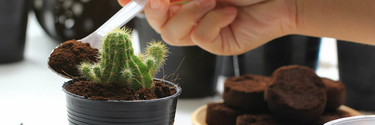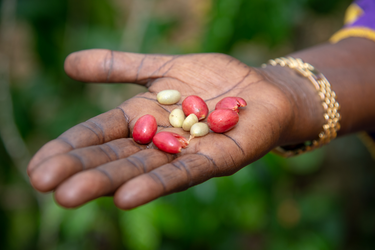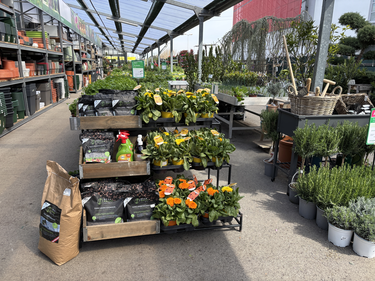
Coffee - a different kind of sustainability report
Coffee grounds as a fertiliser
One of the simplest and most sustainable uses of coffee is as a fertiliser for your plants. Coffee grounds contain important nutrients such as nitrogen, phosphorus and potassium, which are essential for plant growth. Coffee grounds can also improve soil structure by loosening the soil and retaining moisture. By using coffee grounds as fertiliser, you reduce waste and save resources.
This is how it works for indoor plants: dry the coffee grounds and then work 1-2 heaped teaspoons of them into the soil for each indoor plant. Garden plants also benefit from the additional nutrients. Simply work a little coffee grounds into the soil with a rake. But beware: citrus plants do not like coffee!
Coffee as an odour absorber
Coffee has a strong absorbent effect on odours and can be used to eliminate unpleasant smells in the refrigerator or in the car.
How it works: Dry and fluff up the coffee grounds and then place them in a bowl in the fridge. You can leave a bowl of coffee grounds in your car overnight.
Coffee as a cleaning product
Coffee can also be used as a cleaning product. For example, coffee grounds can be used to clean pots and pans or to remove stains from textiles.
Here's how it works: As a scouring agent, simply put the coffee grounds on a dish sponge and you're ready to clean your dishes. You can also use it to clean vases: simply pour in a little coffee grounds and fill up with hot water, leave to work overnight and the vase is clean again.Coffee grounds as a body scrub
Coffee grounds can also be used as a natural body scrub. It can remove dead skin cells and make the skin soft and supple.
How it works: For a cup of scrub, you need 1 tbsp coconut oil, 2 tbsp coffee grounds and 1 tsp honey. Apply with circular movements and rinse off thoroughly with lukewarm water. Because of the coconut oil, you no longer need to moisturise afterwards.Coffee as a natural colourant
Coffee can also be used as a natural dye for fabrics. The brown hue of coffee can create a warm and natural colour that goes well with sustainable materials such as organic cotton or hemp.
How it works: Dyeing fabrics with coffee grounds is really easy! Depending on the amount of coffee grounds, the fabric becomes darker and takes on beautiful brown tones.It works best with natural fibres such as linen, wool or cotton. Synthetic fibres do not absorb the dye very well.
First you need to wash the garment to be dyed and allow it to dry to remove any residue that could affect the result.
Prepare the ingredients: For 100 grams of fabric, you need about 80 grams of coffee grounds. If you want a darker colour, increase the ratio of coffee to water. You will also need some salt to fix the colour: one tablespoon per litre of water.
Pour the water, coffee grounds and salt into a large pan and bring to the boil. Then switch off the heat and dip the fabric in with a wooden spoon. Leave it in the hot water for at least an hour.
Remove the fabric after the exposure time and rinse thoroughly with cold water. Then place it in another pot with a little water and white wine vinegar. Leave it in this for about ten minutes so that it absorbs the colour better.
Rinse the fabric and leave it to dry in the sun. Finally, wash it cold in the washing machine. Make sure to wash the freshly dyed garments separately
Coffee as a pesticide
Coffee grounds can also be used as natural protection against pests. It can help keep slugs, ants and other insects away.
Here's how it works: Spread coffee grounds around the bed or pot to keep slugs and snails away. Coffee grounds also neutralise the scent trails that ants leave for orientation, so simply add a little coffee grounds to ant trails. And if wasps are bothering you on the patio or balcony, you can put some coffee grounds in a fireproof bowl and light it on fire. The smoke produced by the glow will drive the wasps away and nothing will stand in the way of a cosy meal.Coffee grounds as candle wax
Coffee grounds can also be used as natural candle wax. They can be mixed with wax to make a natural and fragrant candle.
Here's how it works: To do this, dry the coffee grounds and crush a few coffee beans with a mortar, then place them with a wick in hot wax in your desired candle container. The heat releases the coffee aromas and you have a lovely scented candle.Most of these uses are suitable for household use, but the use as a raw material for bioplastics or for the production of protein and fibre-rich animal feed additives also show that coffee has many advantages as a sustainable material and can be reused in various ways. So, before you throw your coffee grounds in the bin next time, remember that they still have a lot to offer!




